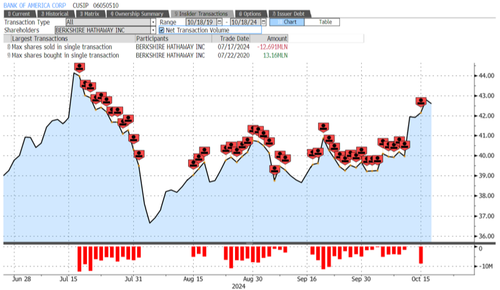
Winter is coming to the automotive industry. Except winter in this instance isn't the approaching weather, or zombies, it's the coming onslaught of highly subsidized, innovative, affordable, and well-received Chinese electric vehicles (EVs). Investors have likely heard about the U.
S. planning its 100% tariff on imported Chinese EVs, but what you might not know is that the tariff may not matter, and that's a problem for many automakers, particularly Ford Motor Company ( F 0.94% ) -- here's why.
What have you done for me lately? Much has been made of Ford's dive into the EV market. On one hand, the company's Mustang Mach-E, F-150 Lightning, and E-Transit have driven the company to the No. 2 spot in U.
S. EV sales behind Tesla . On the other hand, it's also true that through the first half of 2024, the company has lost nearly $2.
5 billion in its Model e division. Furthermore, although Ford's EV sales spiked 61% during Q2 with nearly 24,000 EVs sold, Ford's Model e EBIT margin was a 99.5% loss for the second quarter.
Ford has taken many steps to delay EVs, refocus on hybrids, cancel an upcoming line of EV SUVs, downsize battery plant plans, and ultimately has pushed back on roughly $12 billion of EV investments. The biggest takeaway, however, was that Ford announced it made a secret bet sometime ago with a "skunkworks" team to develop a low-cost EV platform with a target price around $25,000 -- a sales point sure to rope in mainstream consumers and put them in an EV. The rumored launch date is in 2026.
Here's the problem: That $25,000 would have little to no competition in the U.S. right now, but some Chinese EVs can hit that price point and tariffs might not be enough to stop it, if BYD is any indication.
Big tariffs, no problem While Ford's potential $25,000 EV developed by its skunkworks team is a lofty goal, BYD would currently still have the cheapest EV in the U.S. market at under $25,000 even with the 100% tariff.
Even Tesla, with all its early-mover advantages and production prowess, has yet to break the $30,000 mark. BYD's most affordable electric vehicle, the Seagull EV, starts at just under 70,000 yuan, or $10,000, in China. It's part of the reason 51% of Chinese new passenger vehicle sales are EVs and the market is years ahead of the West in terms of development.
The Alliance for American Manufacturing went as far to warn that the Chinese EVs pose a potentially "extinction-level event" for the U.S. EV industry.
Ford CEO Jim Farley explained at a Wolfe Research conference recently that if you can't compete with Chinese automakers, "20% to 30% of your revenue is at risk." Stellantis CEO Carlos Tavares echoed that sentiment when he told reporters, "The Chinese offensive is possibly the biggest risk that companies like Tesla and ourselves are facing right now." What it all means It's troubling for investors that even with a 100% tariff on imported Chinese EVs, the vehicles and their price tags could still undercut the U.
S. EV industry. That's especially true for Ford, which has delayed multiple projects and EV development and focused on its low-cost platform.
The eventual entrance of Chinese EVs into the U.S. is absolutely something investors have to keep an eye on, because it's a development that will change an investing thesis for the near term.
The U.S. EV industry will have a problem with Chinese EVs when they arrive, sooner or later, and that means heavy losses for Ford's Model e unit could drag on longer than anticipated.
.














